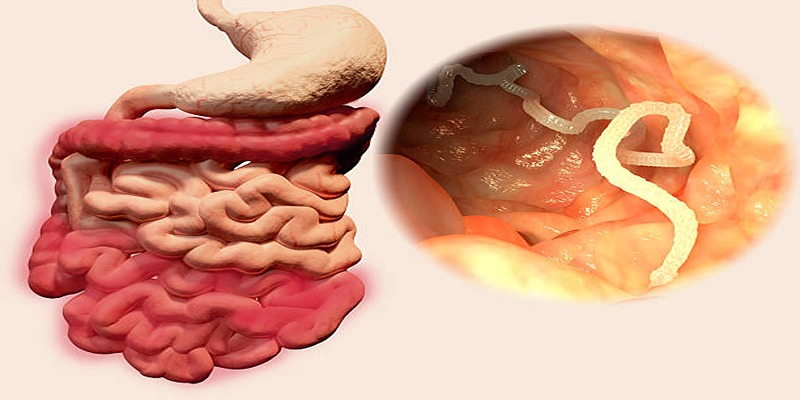While often harmless, muscle twitching and spasms can signal underlying health issues. They often occur after physical activity or due to stress and poor diet. In some cases, they may result from more serious conditions requiring medical attention. Understanding the causes of these involuntary movements can help manage or prevent them.
Muscle cramps can occur in any body part, especially the arms, legs, and eyes. Identifying the causes of twitching and spasms helps guide effective treatment and relief. Key factors include dehydration, fatigue, nerve disorders, and medication side effects. Understanding each cause helps determine proper treatment and prevent chronic discomfort. Staying informed about recurring twitching and spasms can improve management and prevention.

Dehydration and Electrolyte Imbalance:
Appropriate hydration and balanced electrolytes, including potassium, magnesium, and calcium, are vital for muscle function. Dehydration impairs muscle cells, increasing the risk of spasms. Electrolytes enable muscular contraction and assist in conveying nerve messages. A low level can cause unexpected, severe muscle cramps. Many athletes get twitching from sweating and not replacing these minerals. Often contributing are long hours in hot conditions or inadequate water intake during exercise.
Those on diuretics or with chronic diseases could potentially miss vital salts. Diets devoid of important nutrients can aggravate the situation. Processed or salty foods often lack the essential electrolytes needed for muscle function. One can aid by routinely drinking water and eating meals high in magnesium and potassium. Among good options are avocados, leafy vegetables, and bananas. Monitor your fluid intake closely during physical activity. Eating balanced meals and staying well-hydrated support muscle function and help prevent spasms.
Physical Overexertion and Fatigue
Exhaustion brought on by overworking muscles raises the risk of twitching and spasms. Strong physical exercise strains fibers and induces transient breakdowns. Repetitive movements increase tension, often triggering involuntary muscle reflexes. Athletes, weightlifters, and those in physically demanding vocations all deal with this often. Bad technique or omitting warm-ups might aggravate the effects. Even repetitive tasks like prolonged typing can cause spasms. Fatigue increases tension and slows down muscle recovery. Small fibers do not heal correctly without appropriate rest, which causes erratic motions.
Poor sleep habits can also contribute to twitching. Including recuperation days and stretching exercises aids in full muscle recovery. Well-balanced exercise programs lower the likelihood of spasms connected to tiredness. One must pay great attention to one's body. When necessary, stop and relax to prevent injury. Physical overworking without rest causes pain and continuous twitching in fatigued muscles. The key is to have the right mix between rest and activity.
Stress and Anxiety Response
Stress sets up bodily reactions, including spasms and muscle twitching. Anxiety impairs muscular control and increases nerve activity. Small muscle groups sometimes respond with repeated twitching, particularly in the face or hands. Long-lasting high stress causes the body to remain in "fight or flight" mode. This state rapidly empties energy and tenses muscles. Prolonged tension can lead to muscle fatigue and cramps. Even little twitching can feel more intense, depending on your mental state.
Furthermore, meditation helps with relaxation and reduces muscle tension. Reducing symptoms also depends on better sleep and lessening caffeine use. Taking short breaks during the day can reduce tension in overused muscle groups. The health of mind and body is related. Reducing stress helps avoid muscle spasms brought on by nerve reactivity. Long-term control of stress-related muscle twitching requires regular mental health maintenance.
Medication Side Effects
As adverse effects, certain medicines can produce muscle twitching and spasms. Medicines for high blood pressure, ADHD, or asthma can target muscles and nerves. Some antidepressants meddle with brain chemicals meant to control muscles. Diuretics can deplete potassium and magnesium, increasing the risk of cramps.
Additionally, a side effect of steroids could be twitching. Reviewing prescriptions and looking for known adverse effects is vital. Never suddenly cease a medicine without consulting a doctor. Reducing spasms could be achieved by changing dosage under observation. Recreational medicines and herbal supplements can also trigger unexpected side effects. Tell your doctor about all you use. Usually, changes in dosage or a new prescription for a different treatment marks the end of muscle spasms connected to medicines.
Underlying Neurological Conditions
Some muscle twitching and spasms are signs of neurological disorders compromising nerve communication. Diseases such as ALS, multiple sclerosis, or peripheral neuropathy mess with nerve signals to muscles. These disorders often cause either constant or severe twitching in particular areas. Damage to nerve paths disturbs muscle control and causes uncontrollable movement. Early symptoms could be twitching in hands, arms, or legs. People also may experience numbness or tingling. Diagnosis typically involves nerve conduction studies or MRI scans.
Treatment mostly aims to control symptoms and slow down development. Medications alleviate pain or lower twitch frequency. Physical therapy helps strengthen muscles and maintain movement. Identifying neurological issues early improves treatment outcomes. Never ignore long-term spasms or other persistent symptoms. A specialist can help uncover the underlying causes of frequent twitching. Closely monitor conditions that affect the nervous system.

Poor Diet and Nutritional Deficiencies
Muscle twitching and spasms are common results of a diet devoid of basic nutrients. Magnesium, calcium, and potassium are essential for normal muscle action. Deficiency in any of these can disrupt nerve signals and lead to involuntary contractions. Bad eating habits—including too much junk food—starve the body of what it needs. Restrictive diets or fads could aggravate nutritional loss. Those who skip meals or eat irregularly are more vulnerable.
Furthermore, aggravating muscle problems include low vitamin D levels. Intestinal issues can impair nutrient absorption and reduce nutrient availability. Leafy vegetables, dairy, and nuts help boost mineral consumption. In some cases, your doctor may recommend supplements. Eating regular, balanced meals supports muscle function and reduces twitching. A balanced diet helps general nerve conditions as well. Testing and dietary changes help find and fix flaws, providing instant relief. Good eating patterns increase energy and help to ease muscle spasms.
Conclusion:
Effective prevention depends on knowing the main causes of muscle twitching and spasms. Most important are hydration, food, stress management, and physical rest. Understanding when symptoms point to a more serious problem can help to guarantee timely treatment. You can often manage muscle spasms, whether from fatigue, medication, or a neurological disorder. Focusing on body signals can ease discomfort. Long-term recovery from frequent muscle twitching problems and causes of muscle spasms depends on knowledge. Adjusting your lifestyle based on these insights promotes healthier muscles and fewer involuntary movements.












